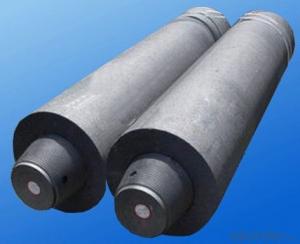When you think of manufacturing, what comes to mind? Maybe it’s the hum of machines, the smell of freshly cut metal, or the precision of a well-oiled assembly line. But have you ever considered the process behind creating something as seemingly simple as a graphite electrode? It’s a journey of transformation, from raw material to a crucial component in various industries. So, buckle up as we dive into the fascinating world of graphite electrode making, a tale of heat, pressure, and a touch of mystery.
Graphite, a form of carbon, has been a staple in the manufacturing world for centuries. It’s known for its ability to conduct electricity and heat, as well as its chemical stability at high temperatures. These properties make it an ideal candidate for electrodes in electric arc furnaces, which are used for melting scrap metal to produce new steel. But how does this black, crystalline material go from the ground to a finely crafted electrode?
The journey begins with the sourcing of raw materials. The primary ingredient is needle coke, a product derived from petroleum. It’s named for its needle-like structure, which is crucial for the electrode’s strength and conductivity. Once the needle coke is acquired, it’s time to mix it with a binder, typically coal tar pitch. This binder acts like the glue that holds everything together, ensuring the electrode maintains its shape and integrity during the manufacturing process.
The next step is kneading, a process that might remind you of baking bread. The mixture of needle coke and coal tar pitch is heated and kneaded to achieve a uniform consistency. This is where the magic happens, as the heat and pressure work together to create a malleable dough-like substance. It’s a delicate balance, as too much heat can damage the material, while too little won’t achieve the desired consistency.
Once the kneading is complete, the mixture is pressed into its desired shape, forming what we call a green electrode. This is a far cry from the final product, as it’s still soft and needs to undergo further processing. The green electrode is then baked in an oven, a process known as graphitization. This is where the real transformation takes place, as the heat treatment causes the carbon atoms to rearrange themselves into a more ordered structure, turning the mixture into graphite.
The graphitization process is a high-stakes game, as it requires precise temperature control. If the temperature is too high, the electrode can become brittle and prone to breakage. If it’s too low, the electrode won’t achieve the necessary strength and conductivity. It’s a delicate dance of heat and time, with the goal of creating an electrode that is both strong and efficient.
After the graphitization, the electrode is machined to its final dimensions. This involves cutting, grinding, and shaping the electrode to fit the specific requirements of the electric arc furnace it will be used in. Each electrode is tailored to its purpose, ensuring optimal performance and longevity.
But the process doesn’t end there. The electrodes are then tested for quality, a crucial step to ensure they meet the rigorous standards of the industry. This includes checking for impurities, structural integrity, and electrical conductivity. Only the best make the cut, as anything less could compromise the safety and efficiency of the furnace operations.
Throughout this entire process, there’s a sense of artistry and craftsmanship that’s often overlooked in the world of manufacturing. The workers who create these electrodes are not just operating machines; they’re orchestrating a symphony of materials and processes, each step carefully calibrated to produce a product that is both functional and reliable.
In a world that often values speed and efficiency above all else, the process of graphite electrode making is a reminder that sometimes, the journey is just as important as the destination. It’s a testament to the ingenuity of human innovation and the enduring power of nature’s elements, working together to create something truly remarkable.
So next time you see a graphite electrode, remember the story behind it. It’s not just a piece of graphite; it’s the culmination of a complex process, a marriage of science and art, and a tribute to the skilled hands that bring it to life.

